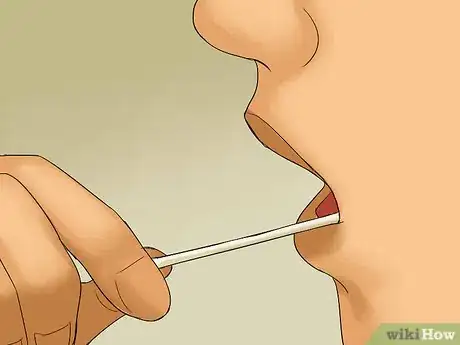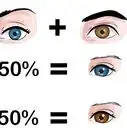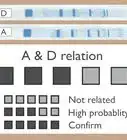This article was co-authored by wikiHow Staff. Our trained team of editors and researchers validate articles for accuracy and comprehensiveness. wikiHow's Content Management Team carefully monitors the work from our editorial staff to ensure that each article is backed by trusted research and meets our high quality standards.
There are 7 references cited in this article, which can be found at the bottom of the page.
This article has been viewed 43,667 times.
Learn more...
The science of DNA testing has unlocked new self-discovery. A simple cheek swab will help you figure out your parentage, your heritage, and your biggest health risks. These tests can be done by purchasing a kit, taking a sample, and shipping it to the testing company. Tests can also be done immediately in accredited regional facilities. After getting your test done, seek out the help of a doctor or legal counsel to explain what your results mean.
Steps
Using a Home Testing Kit
-
1Purchase a kit. Some kits, such as IDENTIGENE for DNA paternity tests, may be found at pharmacies like Walmart and Walgreens. Other kits can be ordered online at the manufacturer’s website. Some options are AncestryDNA for genealogy analysis and 23andMe for health risk analysis.[1]
-
2Gather saliva samples. After you receive the kit, use the included tools to gather your DNA sample. The kits either have cheek swabs or saliva containers. Swab the inside of your cheek or spit into the container.[2]
- DNA tests to establish paternity require a sample from parents as well as the child.
Advertisement -
3Document the source of the sample. The kit will come with packaging to mail back to the testing facility. For example, your paternity DNA test may have several envelopes. Record the name of the sample provider and their personal information, including age and ethnicity.[3]
- Many DNA test companies operate online. The sample kit will have a barcode that you must register on the company’s website.
- DNA samples to establish paternity require signatures from the sample providers.
-
4Mail the samples to the company. Fill out the order form with your information. This will indicate you as the results recipient. The envelopes are typically prepaid, so all you have to do is slip them into a mailbox.
-
5Check the results online. Go to the company’s website. If you haven’t already, set up an account by registering your email and setting a password. Simple paternity tests can be completed relatively quickly, but lengthier ancestry and health risk analysis DNA test will take longer.
-
6Seek counseling for your results. The test results often require more analysis to be illuminating. For example, a health-based DNA test will reveal how much more likely you are to get a certain disease than someone else. Don’t worry yet and don’t disregard any treatment plans your doctor has already given you. Call the company or enlist the help of your doctor to interpret the results before you change your lifestyle.[4]
- Paternity tests need to be submitted to the court system to be considered official.
- For ancestry tests, research your family tree to gather more information about your lineage.
Getting Tested in a Lab
-
1Visit an accredited testing facility. Search your area for government-sanctioned testing facilities. This is particularly important during paternity tests. The facility must follow established procedures in order for the test to be legitimate. Find lists of facilities online and ask for the facility’s credentials before taking the test.[5]
-
2Provide the requested sample of DNA. DNA testing can be done with any number of body fluids or tissues. Many on-site tests are done by swabbing the inside of a cheek. When testing an unborn child, the facility can now withdraw blood through the mother. This can be done after the first trimester for a safe and highly accurate paternity test.[6]
- Blood and swab tests are non-invasive. Invasive tests, such as using a needle to extract amniotic fluid, pose slight risks to an unborn child, so wait until after the child is born to get the test done.
-
3Gather necessary samples from other people. Genealogy and medical DNA tests will be complete after you provide your sample. To test paternity or maternity, you’ll also need samples from parents. The parent needs to come into the lab and provide their sample. If they can’t or don’t want to, you’ll have to get a sample from a grandparent or other immediate relative.[7]
-
4Seek counseling for test results. Medical DNA tests will be explained by the facility or your doctor. Heritage DNA tests can be researched via your family tree. For relational DNA tests, you’ll have to go through the legal system. To establish paternity in Ohio, for example, you will need to speak to an attorney and set up a court proceeding to make the DNA test official.[8]
Community Q&A
-
QuestionCan DNA tell me if my sister and I have the same father if the father is deceased?
 Community AnswerYes. You would have similarities in your samples that would tell you this.
Community AnswerYes. You would have similarities in your samples that would tell you this. -
QuestionHow long does it take to get the results?
 Community AnswerThe wait for your results can vary depending on the company and the type of DNA test carried out, but for most companies it takes at least a few weeks.
Community AnswerThe wait for your results can vary depending on the company and the type of DNA test carried out, but for most companies it takes at least a few weeks. -
QuestionDo I need both parents to give their DNA for a test?
 Community AnswerYou don't need to have both parents but if you want, and they're willing, you can have both. In actuality though, you only need one.
Community AnswerYou don't need to have both parents but if you want, and they're willing, you can have both. In actuality though, you only need one.
Warnings
- DNA tests have to be consensual. A person must agree to a test by signing the test kit envelope or documentation at the facility. You can’t secretly have a paternity test done, for instance.⧼thumbs_response⧽
- DNA tests are not perfect. A health risk analysis can have different results based on company interpretation or how you list your ethnicity.⧼thumbs_response⧽
References
- ↑ https://www.legalgenealogist.com/2014/04/06/2014-most-bang-for-dna-bucks/
- ↑ https://dnatesting.com/can-i-test-without-mom-dad-or-child-knowing/
- ↑ https://dnatesting.com/can-i-test-without-mom-dad-or-child-knowing/
- ↑ http://discovermagazine.com/2008/sep/20-how-much-can-you-learn-from-a-home-dna-test
- ↑ https://travel.state.gov/content/travel/en/legal-considerations/us-citizenship-laws-policies/citizenship-and-dna-testing.html
- ↑ http://americanpregnancy.org/prenatal-testing/paternity-testing/
- ↑ http://www.babymed.com/paternity-test-during-pregnancy-and-testing-for-dna#
- ↑ https://www.ohiobar.org/forpublic/resources/lawyoucanuse/pages/lawyoucanuse-438.aspx
About This Article
To get a DNA test result using a home testing kit, start by purchasing a kit at your local pharmacy or online. Once you receive your kit, swab the inside of your cheek or spit into the container for your DNA sample. If you’re establishing paternity, you’ll also need to get a sample from the child. Next, use the packaging included with the kit to mail out your sample for analysis. Then, register online with the company to review your results. To learn how to find an accredited testing facility, keep reading!





























































